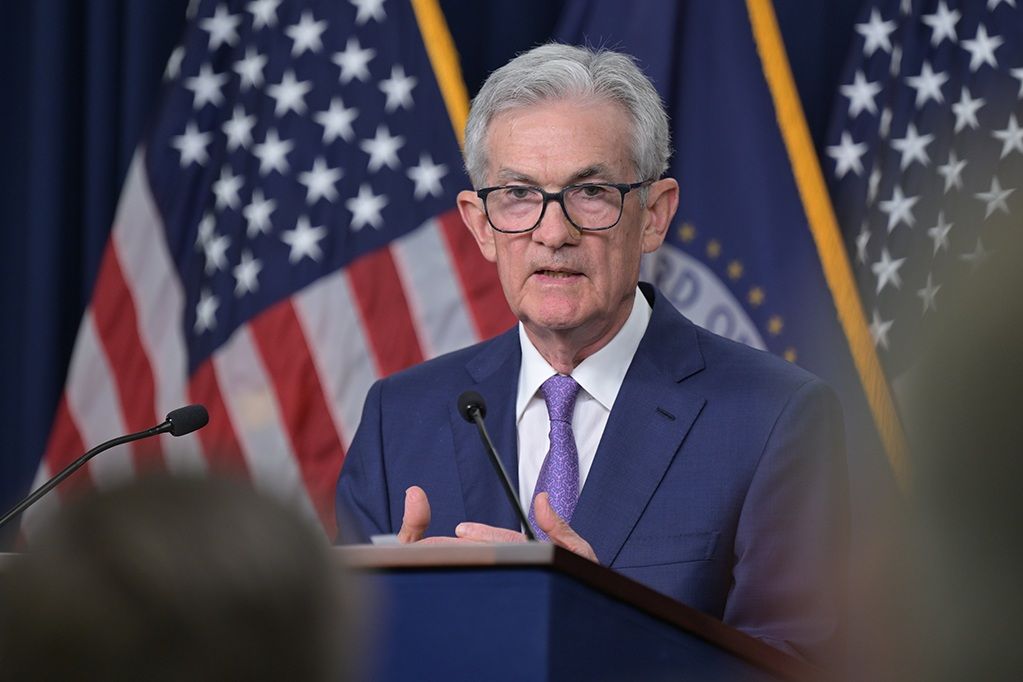This week, Fed’s Powell must talk up growth while keeping rate cuts on the table

Jerome Powell is stepping into a tough spot this week. He has to assure investors that the economy is strong while making it clear that the Federal Reserve is ready to cut interest rates if things start going south.
The timing is brutal. Stocks have been unstable, bond yields are down, and the White House isn’t exactly helping. His message has to be precise—too much confidence and markets panic, too little and the sell-off deepens.
The Fed is expected to keep interest rates steady when officials meet on March 18-19. But traders are betting on three rate cuts this year, starting in June. Economists are calling for two. If Powell signals only two, he’ll need to stress the Fed’s willingness to act fast if the job market shows signs of cracking.
“At the margin, the Fed could make it slightly better or slightly worse,” said James Athey, portfolio manager at Marlborough Investment Management. “But clearly they can’t completely calm markets because the hit to sentiment has come largely from the White House.”
Fed faces pressure as markets react to Trump’s economic policies
Donald Trump has made things worse. The president’s trade war escalated fast, and the market is feeling it. Stocks have been in a free fall for the past month. Treasury yields are dropping. Consumer sentiment is down. The White House hasn’t stepped in to reassure anyone. Instead, Trump said on March 9 that the economy is in a “period of transition.” Treasury Secretary Scott Bessent doubled down, saying the markets are in need of a “detox.” None of that helped investors.
Market volatility is already affecting Fed decisions. The two-year Treasury yield, which reacts the fastest to monetary policy shifts, has dropped nearly 60 basis points since January. It hit 3.83% this month, the lowest level in over five months. The S&P 500 is down 10% from its peak. The VIX, which measures market fear, hit its highest level since August.
That’s the backdrop for Powell this week. He can’t ignore it. “Powell needs to give some sort of a signal that they’re watching it,” said Dominic Konstam, head of macro strategy at Mizuho Securities USA. The Fed doesn’t react to the stock market directly, but it can’t pretend this isn’t happening.
Economic projections coming out this week are expected to show slower growth for 2025 and slightly higher core inflation, which removes food and energy costs. That makes the Fed’s job even harder.
Inflation makes rate cuts complicated
Inflation is still a problem. Consumer prices slowed in February. Producer prices didn’t move at all. But the personal consumption expenditures (PCE) price index, which the Fed watches closely, is still firm. Long-term inflation expectations have now climbed for three straight months, hitting a 30-year high.
That’s why Powell can’t just promise rate cuts. “We’ll hear the message that things are still holding up and that policy is in a good place,” said Sarah House, senior economist at Wells Fargo. She wants clarity on how the Fed is balancing inflation risks against a slowing economy.
Matthew Luzzetti, chief US economist at Deutsche Bank, says the Fed will wait before moving rates. “There’s lots of uncertainty that’s out there,” he said. “They are going to be in a wait-and-see mode.” He doesn’t expect rate cuts this year but acknowledges that the inflation fight isn’t over.
If the economy slows while inflation stays high, most economists expect the Fed to keep rates steady. But they’re also watching Trump’s other policies. Tax cuts and deregulation could push growth and inflation even higher, forcing the Fed to rethink its strategy. Powell and other officials are waiting to see the full impact before making a move.
“Despite elevated levels of uncertainty, the US economy continues to be in a good place,” Powell said earlier this month in New York. “We do not need to be in a hurry and are well positioned to wait for greater clarity.”
Fed’s balance sheet and Trump’s trade war add to uncertainty
Investors are also looking for clues about the Fed’s balance sheet. Officials have been reducing it, a process called quantitative tightening (QT). Minutes from the Fed’s January meeting show that they’ve discussed slowing or pausing QT, especially since lawmakers haven’t reached a deal on the debt ceiling.
“The argument for March is that the Fed has already talked about it,” said Blake Gwinn, head of US rates strategy at RBC Capital Markets. “So why not just do it? They can pause QT and restart it later.”
A Bloomberg News survey shows most economists expect the Fed to keep rates steady through mid-2025, with two cuts in September and December. That’s a shift. Back in December, they expected three cuts starting in March. The change reflects uncertainty around Trump’s trade policies.
The president has threatened tariffs against China, Canada, and Mexico. He’s also changed his stance multiple times, making it impossible for markets to price in risk. Investors don’t know what’s coming next, and that’s creating instability.
“The Fed is in a very tough spot right now, facing a more stagflationary outlook even as core inflation remains well above its medium-term target,” said Scott Anderson, chief US economist at BMO Capital Markets. “Uncertainty around the magnitude, duration, and targets of future tariffs further complicates the monetary policy outlook.”
Most economists don’t expect big changes to the Fed’s post-meeting statement. But some see the possibility of a slowdown in QT. Around 11% predict the Fed will ease up next week. Another 41% think that will happen in the second quarter.
Trump’s policies could force the Fed to act sooner
Looking ahead, the big question is how the Fed will react if inflation stays high while the economy slows. Nearly three-quarters of economists surveyed said they now expect weaker growth in 2025 due to Trump’s policies. Two-thirds now predict higher inflation.
So far, Fed officials haven’t said much about how Trump’s policies will influence their decisions. They remain optimistic about the labor market but acknowledge inflation concerns.
“The costs of being cautious are very, very low,” Powell said this month. “The economy’s fine. It doesn’t need us to do anything, really, and so we can wait and we should wait.”
Most economists believe the Fed will hold rates steady if inflation remains high while growth slows. But if conditions worsen, some expect cuts to come sooner.
“If our downside scenario plays out, the Fed will have to shift to focus on growth risks and could start to cut rates by Q3,” said Kathy Bostjancic, chief economist at Nationwide. She sees the first cut happening in October.
* The content presented above, whether from a third party or not, is considered as general advice only. This article should not be construed as containing investment advice, investment recommendations, an offer of or solicitation for any transactions in financial instruments.


